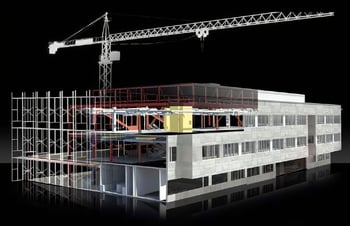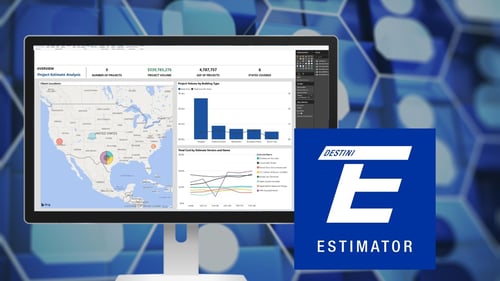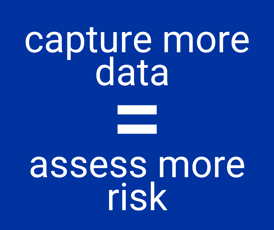10 Things Your Construction Competitors Can Teach You About Winning Work
Not winning a project hurts. Estimators know this pain firsthand because they spend a lot of time and brain power pursuing the job. You may ask yourself “what did the other company have that we didn’t?” We are going to break it all down for you.
Before we jump into the 10 things your construction competitors can teach you about winning work let’s first point out a couple of obvious things. This article is focused on projects where there is an opportunity for future projects. It is not about:
- A flash-in-the-pan project where the lowest cost and fastest schedule is the only thing the project owner is looking at. Projects that are low cost and fast usually mean change orders, cutting corners to save a buck, and not having a happy customer at the end of the day.
- “My uncle is the CEO” kind of project. We are looking at a level playing field in building project pursuits.
Now, let's see what your competitors can teach you about winning projects.
 Tech-forward
Tech-forward Your competitors are using technology to their advantage and project owners are taking notice. Before you start showing off the technology that can be used in the field, project owners are being wowed by your competitors who can confidently talk preconstruction data and trends during the project pursuit. Your competitors can quickly and easily find specific cost quantities and alternates in their estimates (as well as tie it back to takeoff drawings) without fumbling between multiple platforms or, heaven forbid, Excel spreadsheets. Better yet, they can pull up dashboards of data that project owners drool over so they can get right into the meat of project discussion. If you haven’t experienced this tech-forward feeling, then you need to see DESTINI Estimator for yourself.
Complete scope of work
This may seem simple, but your competitor included a complete scope of work in their estimate. It does not mean that they provided an estimate based on what they were given. They have seasoned preconstruction professionals involved in the project from day 1 and those experienced people know when you need to include additional scope that was not thought of during conceptual estimating. It starts with knowing what your project owner wants (beyond the actual project completed). Your competitor is asking questions like “Have you considered a future building expansion and taken into consideration easements on the property?” and “The streets leading to the site are full of potholes and it would be more efficient for project deliveries, personnel, and the surrounding community if the streets were in good working order. Have you considered this as part of the project?”
Click here to read more about conceptual estimating in DESTINI Estimator.
Project team collaboration
.jpg?width=350&height=234&name=Team-Work-Beck-Tech-768x1024%20(2).jpg) Collaboration across the design team, building team, specialty subs, and project owner set your competition apart during the project pursuit. They collectively gathered to discuss how to create the best outcome. Notice we didn’t say “the best building”. The end goal of a project is not the best building … it is the best outcome for the owner, the community, and each company involved in bringing the project to life.
Collaboration across the design team, building team, specialty subs, and project owner set your competition apart during the project pursuit. They collectively gathered to discuss how to create the best outcome. Notice we didn’t say “the best building”. The end goal of a project is not the best building … it is the best outcome for the owner, the community, and each company involved in bringing the project to life. Provided alternates to consider
Your competitors brought problem-solving to the table during the selection process. They took the complete scope of work and documented alternates to be considered. They showed their collaboration through their estimating data and creative thinking. Having a game plan for alternate material costs sets your competition apart from everyone else.
Spoke the customer’s language
This goes back to the earlier point of not focusing on “the best building.” Speaking the customer’s language is really understanding their end goal for the project. If it is a hospital, it could be the number of operating rooms or patient beds made available to the community they serve. For a new school building, the district wants to get the new building up, running, and staffed before the next school year starts to help overcrowding at other schools. Your competitor kept the customer’s end goal top of mind and the focus of the project team.
Crew staffing

The labor shortage in construction is still very real. Your competitor won a project because they could guarantee that they would have crews on site ready to break ground. They got creative with crew staffing, made sure to keep their best team members, and paid for field crew accommodations. Your competitors are also keeping in close contact with their trustworthy subcontractors. They are pulling out all the stops to ensure their next project has the right people and enough team members to make it happen.
Manage risk efficiently
In construction, the risk is everywhere. Companies that know how to prepare and manage risk efficiently will succeed. Your competitors are coming to the project table discussion with a plan for how to handle the issues that pop up to the risks that are known factors on all construction projects. Some of the things they are talking about with the project team are making safety a priority for everyone, being open and honest about incomplete plans, and being prepared to discuss alternatives to building materials
Click here to read more about how to manage risk in preconstruction.
Long-term approach
Your competitor is looking to turn a new customer into a repeat customer. And they are approaching all of their conversations with the project owner with that goal in mind. The construction industry relies heavily on relationships because most capital and complex projects take a few years to complete. Your competitor knows they are in a relationship with the project team for a while! Are they going to see eye-to-eye with the project owner on every project hurdle? No. But just like any good long-term relationship, they are going to be in step with the whole project team for the duration of the project and beyond.
Knows how to build a relationship
Building a relationship in the construction industry doesn’t mean fancy dinners, sporting event suites, BBQ lunches for the crew, or weekend hunts. Relationship building is getting to know what really matters to each project stakeholder and sharing similar values to achieve goals. Your competitors are doubling down on actually getting to know their stakeholders and being the type of company those stakeholders want to work with. Your competitors are returning calls and emails in a timely fashion, being honest with their answers, and keeping the project owner’s goal top of mind in every conversation.

Uses data to build trust
It is one thing to say “Trust me, I’ve done this for 20 years. I know what I’m talking about.” versus “Trust me, I have the data to prove it. Let’s look at it together.” The first statement sounds like a used car salesman. The second statement hits differently especially when the stakes of a multi-million dollar project are on the line. Your competitors are using data to beef up their work experience and can talk about the analysis of the data at length with project stakeholders.
Click here to learn more about how data analysis is the future of preconstruction.

-1.png?width=112&height=112&name=image%20(4)-1.png)















